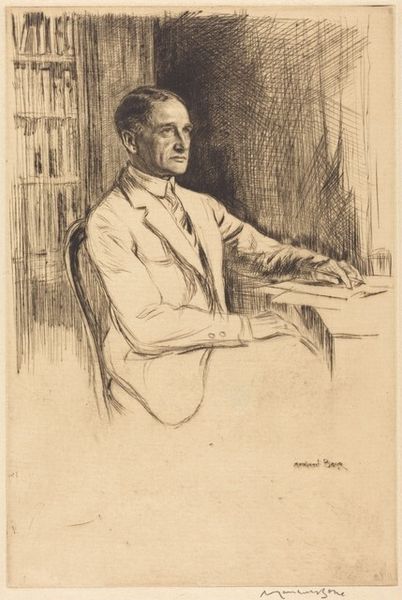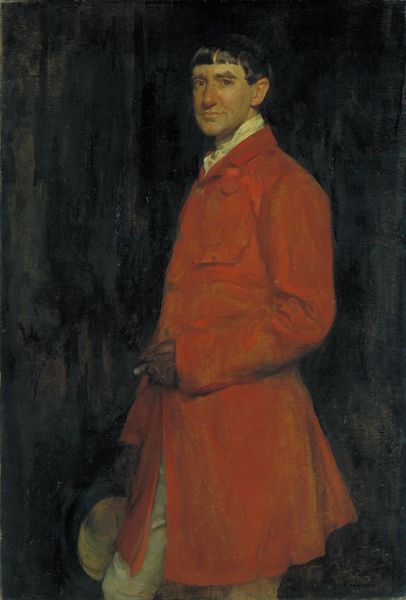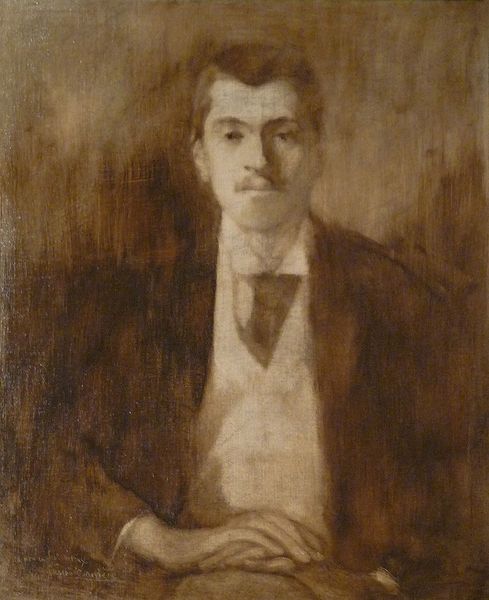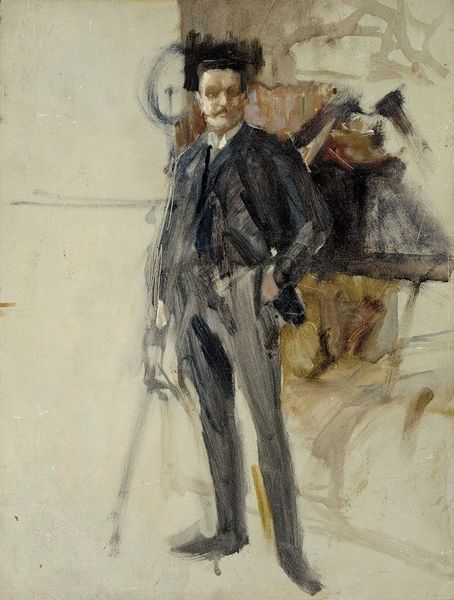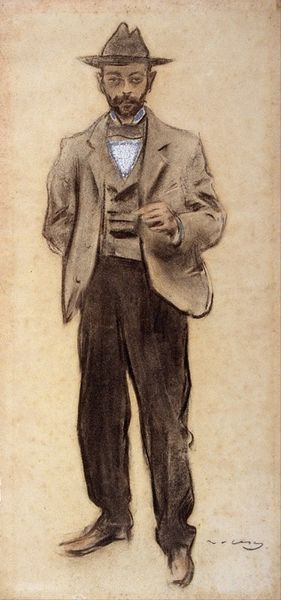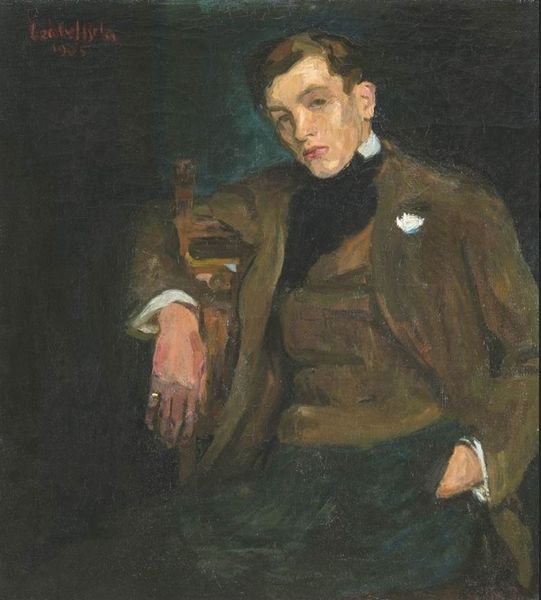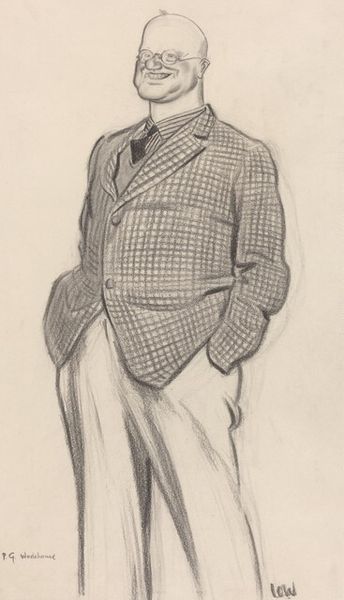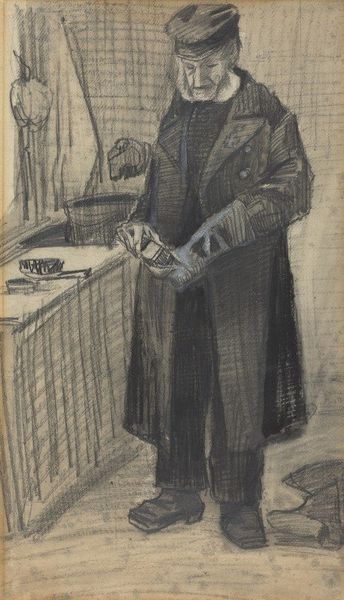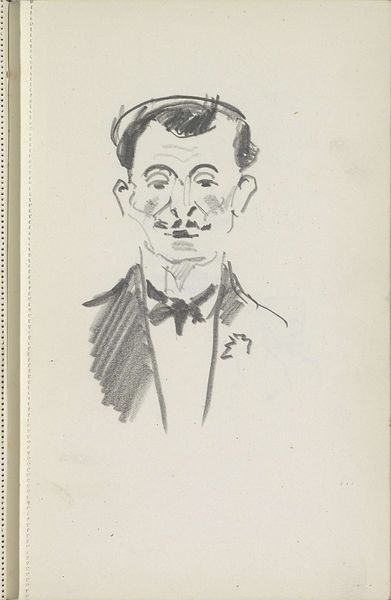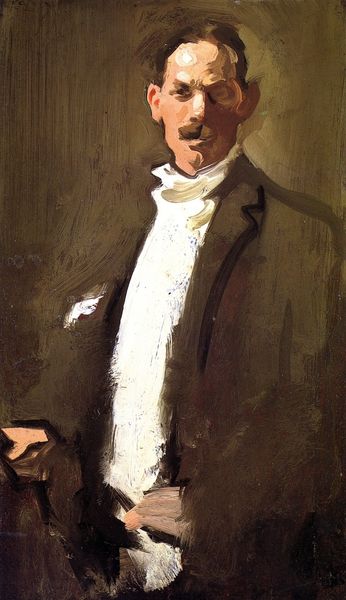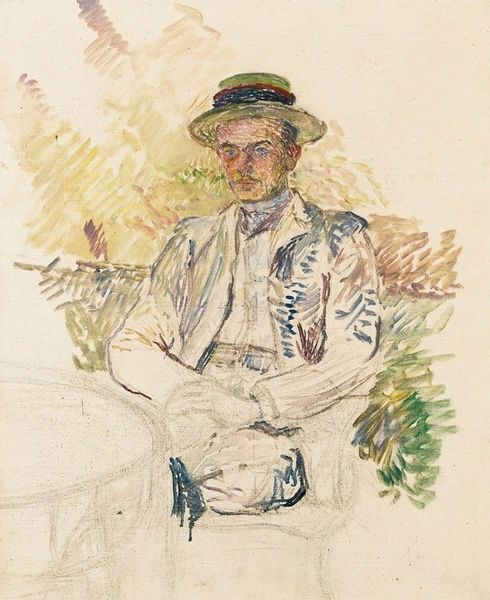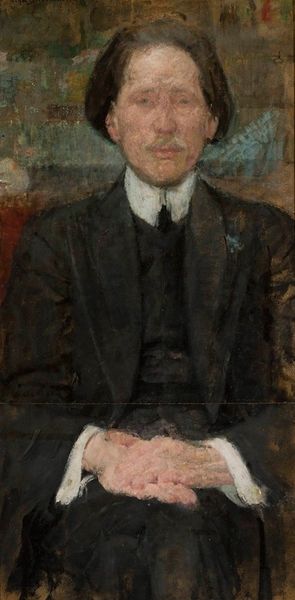
Copyright: Public Domain: Artvee
Curator: Alright, let’s talk about this compelling portrait. Lovis Corinth painted "Franz Heinrich Corinth, the Artist’s Father" in 1888, using oil paint with an impasto technique, which is quite apparent in the textured brushstrokes. What are your initial thoughts on it? Editor: Intimate, but somewhat melancholy. The colors are muted, almost earthen, yet his father's gaze feels direct, assessing. I wonder what their relationship was like. It definitely isn’t your run-of-the-mill proud father portrait; there’s something a bit… haunted in his eyes. Curator: That sense of melancholy you're picking up might stem from Corinth's later artistic inclinations. Even this early work hints at the German Expressionist style he’d become known for—anxiety, inner turmoil rendered visually. And father portraits, especially from artists just finding their style, often hold layers of personal reckoning. Editor: Exactly! And the way the light falls, or rather doesn't, it adds to that sense. It’s not a flattering light; it reveals every line and crease. He’s captured the man, not just an image of the man, and maybe even their dynamic. Notice his hands? They're sort of gripping the paper. It’s tense, not relaxed. Curator: The hands, yes, a site of complex symbolism. Consider the societal expectations placed on fathers during that era—provider, patriarch, figure of strength. The tight grip could symbolize both the weight of responsibility and perhaps Corinth's own anxiety about meeting those expectations himself, or of how well his father was doing it. The paper could be his accountings and invoices of sorts. Editor: True. It's not just about representing his father literally; it's about capturing a mood, an atmosphere, a psychological landscape between father and son, I’d venture. He saw this. And that smattering of what looks like maybe dried red paint is really catching my eye—I am wondering if it could be foreshadowing something related to trauma. It is, to me, the focal point. Curator: A powerful observation about how seemingly incidental elements can act as both symbols and premonitions of psychological stress to come, something deeply associated with the visual rhetoric in German Expressionism, to me. Corinth lived through two World Wars and the death of the Third Reich to further define it. This image of the Father as an icon represents the weight of what family continuity means—for good and bad. Editor: Well, whatever it is about the piece, that smattering has got me wondering…It makes the portrait stick. Okay, now that's one father and son saga that gets the imagination humming. Thanks for all the backstory here, and the rich symbolism of how a Father as archetype has informed all kinds of artistic perspectives on familial obligation.
Comments
No comments
Be the first to comment and join the conversation on the ultimate creative platform.
